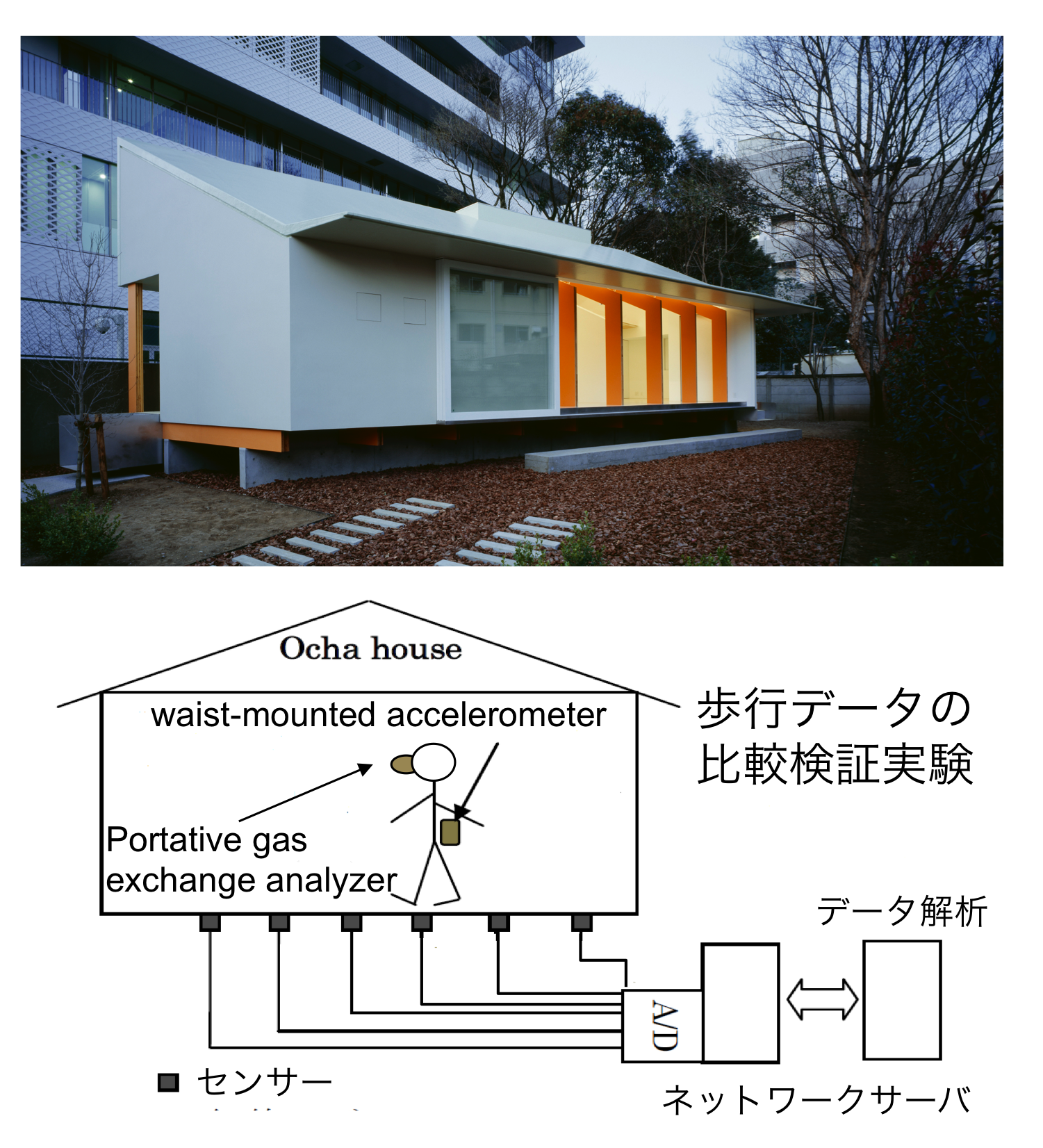The research projects described below are conducted within the facilities of the Biomedical Engineering Laboratory (see Ohta-ken) from the department of Environmental Human Sciences. Some projects are conducted in collaborations with the National Institutes of Biomedical Innovation, Health and Nutrition, Tokyo, Japan (HERE).
Team members
点任 / Dian Ren (M2)
佐々木美緒 / Sasaki Mio (M2)
太田裕治先生 / Pr. Ohta Yuji
Head of the Biomedical Engineering Laboratory
安在絵美 / Anzai Emi (collaborating)
currently post doc at the National Institute of Advanced Industrial Science and Technology (AIST)
Description of projects
1) Smart devices and smart living environments to assess and promote physical activity
During the two past decades, waist-worn monitors have been the preferred method for the assessment of physical activity. However, the recent development of wearable technologies allows for a ubiquitous sensing of human movements, which might provide for a more accurate assessment of physical activity. Smartphones, wristbands, smart-watches, etc., all these technologies have their respective strengths and limitations, and might bring complementary information in an IoT networks dedicated to the assessment of physical activity.
The OCHAHOUSE project
The OCHAHOUSE is located in Bunkyo District, Tokyo. Its flexible structure allows for the experimentations of new sensing technologies and the development of new smart home features. One of the minimally invasive technology currently developed in the OCHAHOUSE aims at monitoring the physical activity of inhabitants during the time they spend at home. This project consists of installing and testing new sensing modalities, processing raw data, developping original algorythms to extract features that quantitatively reflect indoor physical activity (i.e. step-count, kilocalory prediction, etc...).

Preliminary results of this project have been presented at national and international conferences:
- Sasaki M, Tripette J, Saiwaki N, Motooka N, Ohta Y. Introduction to a smart floor vibration-based step counter. The 33rd Conference of the Japanese Society for Life Science, Tokyo, Japan (September 2017).
- Tripette J, Sasaki M, Motooka N, Ohta Y. Assessing physical activity using floor vibration in a smart home setting. The 16th Meeting of the International Society of Behavioral Nutrition and Physical Activity. Victoria, Canada (June 2017).
- Tripette J, Kaneko S, Motooka N, Ohta Y. Measuring step-count at home using floor vibrations (OchaHouse Project). The 6th International Congress on Physical Activity and Health. Bangkok, Thailand (November 2016).
- Tripette J, Nakajima C, Motooka N, Ohta Y. Ochahouse project: monitoring physical activity using floor acceleration. The 70th National Conference of the Japanese Society of Physical Fitness and Sports Medicine. Wakayama, Japan (September 2014).
The Smartshoes project
A second project consists in the development of smart insoles able to recognize activities of the daily living. We use a home-made plantar pressure measurement insole and perform machine learning procedures to develop activity recognition algorithms.

2) Assessment of balance ability in senior people
Falling events are highly prevalent in senior people. They can limit the quality of life and generate a significant burden on the healthcare system. The assessment of gait stability might help to identify potential fallers, but its evaluation can be complex. Measurements require multiple-instrument settings, elaborated protocols for data acquisition and analysis, and expensive equipment. We recently developped a 7-sensor plantar pressure measurement insole (see figure above), which might help to overcome this complexity. We are currently conducting a series of experiments aiming at testing the validity of this new 7-sensor insole for the assessment of gait stability in senior subjects.
3) Lifestyle interventions to promote physical activity
The design of policies able to promote physical activity is one important contemporary public health challenge. We are conducting intervention studies aiming at a better understanding of behavior changes toward more active lifestyle. This interventions includes active video gaming, standing desk installation, caffeine drinking, etc…